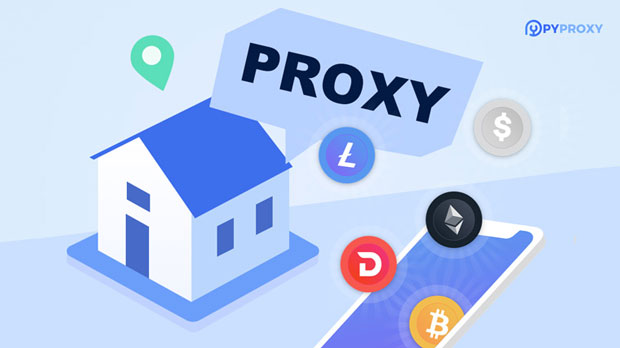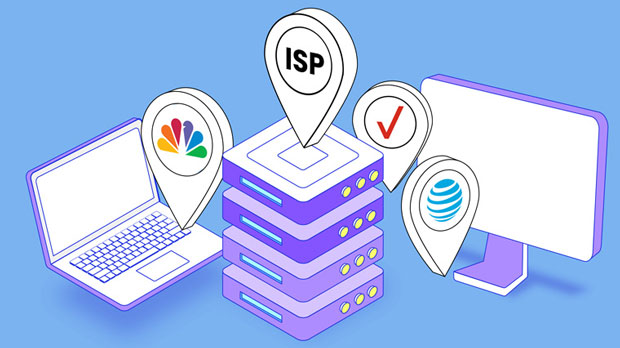ProxyEmpire vs PYProxy, which residential proxy is better for crawler tasks?
When considering residential proxies for web scraping tasks, ProxyEmpire and PYPROXY are two major players in the market. Both offer specialized residential proxy services, but their performance, features, pricing, and overall value can differ significantly depending on your specific scraping requirements. In this article, we will analyze and compare ProxyEmpire and PYProxy to determine which is better suited for web scraping tasks, focusing on key aspects such as proxy pool size, connection stability, pricing models, customer support, and additional features that may influence a user’s decision. Introduction to Residential Proxies and Their Importance in Web ScrapingResidential proxies are essential tools for web scraping tasks. They are real IP addresses assigned to real residential users, which makes them highly effective for bypassing anti-scraping measures, ensuring anonymity, and preventing detection during large-scale data collection efforts. Whether you’re gathering competitive intelligence, performing SEO analysis, or extracting information from e-commerce sites, using a reliable residential proxy network is crucial for the success of your scraping operations.Both ProxyEmpire and PYProxy provide residential proxies tailored to these needs, but their offerings come with distinct advantages and drawbacks. A deep comparison of these two services will help clarify which one is the better option for web scraping.Proxy Pool Size and Geographical CoverageOne of the most important factors when choosing a residential proxy provider for web scraping is the size and diversity of their proxy pool. A larger proxy pool offers more IP addresses, reducing the risk of hitting proxy limits or being blocked while scraping.ProxyEmpire: ProxyEmpire boasts an extensive pool of residential proxies, with a large number of IP addresses spread across numerous countries. This global reach is crucial for scraping tasks that require geographic variation, as it ensures access to proxies from virtually any region of the world. Additionally, the provider allows users to filter proxies based on their desired location, making it easier to target specific regions.PYProxy: PYProxy, while offering a solid pool of residential IP addresses, does not have as wide geographical coverage as ProxyEmpire. Though it provides access to proxies from several countries, its network is more limited in scope, which may be restrictive for businesses that require data scraping across a broad range of locations.Analysis: For users with specific regional scraping needs or those requiring large-scale, diverse proxy access, ProxyEmpire is the better choice due to its superior geographical coverage and larger proxy pool. However, PYProxy may still be suitable for smaller-scale projects or those that focus on specific regions.Connection Stability and SpeedWhen it comes to web scraping, the quality of the connection is paramount. Slow or unstable proxies can lead to interrupted data collection, significantly hindering the success of a scraping project. The ability to maintain fast and stable connections is essential for scraping large volumes of data in a short amount of time.ProxyEmpire: ProxyEmpire excels in connection stability and speed, with a reputation for maintaining high-performance proxies. They employ advanced technologies to ensure low latency and fast response times, which is essential for efficient web scraping. Users report that ProxyEmpire’s residential proxies handle high traffic without sacrificing performance.PYProxy: PYProxy also provides reliable proxies with good connection speeds, though users may experience occasional fluctuations in stability, especially during peak usage periods. While its proxies are generally stable for scraping tasks, they may not match the consistency and speed offered by ProxyEmpire.Analysis: For businesses where speed and reliability are critical, such as those performing time-sensitive scraping tasks, ProxyEmpire would be the preferred choice. PYProxy, while offering adequate performance, might struggle under heavy traffic conditions.Pricing Models and FlexibilityPrice is a significant factor for businesses looking to optimize their scraping operations. A pricing model that aligns with the scale and frequency of usage can provide cost savings in the long run.ProxyEmpire: ProxyEmpire’s pricing is structured around a pay-as-you-go model, which provides flexibility for users with varying needs. However, the cost may be higher compared to other providers due to the premium nature of its services. ProxyEmpire offers both subscription-based and volume-based pricing, which means larger projects can benefit from discounted rates.PYProxy: PYProxy offers more affordable pricing, with flexible plans that cater to different levels of usage. The pricing is more budget-friendly compared to ProxyEmpire, making it a more attractive option for smaller scraping tasks or businesses on a tight budget. However, while the lower cost is appealing, it may come at the cost of slightly less performance and proxy variety.Analysis: For businesses with larger scraping needs or those that require a more flexible and premium service, ProxyEmpire is the ideal choice, even at a higher cost. For smaller projects with budget constraints, PYProxy provides an affordable alternative, though it may require compromise in terms of performance and geographical coverage.Customer Support and User ExperienceEffective customer support is crucial for resolving issues quickly and ensuring smooth operations when using residential proxies for web scraping. A responsive support team can make a big difference when troubleshooting connection problems or dealing with account issues.ProxyEmpire: ProxyEmpire is known for its excellent customer support, offering 24/7 assistance via multiple channels, including live chat, email, and phone. They provide comprehensive documentation and troubleshooting guides, ensuring users have all the resources they need to succeed.PYProxy: PYProxy also offers customer support, though it may not be as readily available as ProxyEmpire. Users have reported slightly slower response times, especially for less urgent queries. Nevertheless, the support team is knowledgeable and can help resolve technical issues.Analysis: For businesses that require high levels of customer support and immediate assistance during scraping tasks, ProxyEmpire offers a superior experience. However, if customer support is not a top priority, PYProxy can still serve as an effective solution.Additional Features and CustomizationApart from the core features, both providers offer additional tools and services that can enhance the web scraping experience.ProxyEmpire: ProxyEmpire provides advanced features such as rotating proxies, sticky sessions, and dedicated proxy options. These allow for greater flexibility and customization, particularly for large-scale scraping projects where session persistence or the ability to rotate IPs is essential.PYProxy: PYProxy offers some basic features like proxy rotation, but it may not provide as many customization options or advanced features as ProxyEmpire. For users looking for simple scraping solutions, PYProxy’s features will likely be sufficient, but it may fall short for more complex requirements.Analysis: For those needing advanced customization and features like sticky sessions or detailed proxy management, ProxyEmpire is the more suitable option. For straightforward scraping tasks, PYProxy provides enough basic functionality to meet the needs of most users.Conclusion: Which Proxy Service is Better for Web Scraping?Both ProxyEmpire and PYProxy provide valuable residential proxy services for web scraping tasks, but the choice between them ultimately depends on your specific requirements.Choose ProxyEmpire if:- You need a large proxy pool with extensive geographical coverage.- Connection speed, reliability, and performance are critical for your scraping tasks.- You require advanced features like sticky sessions and proxy rotation.- You are willing to invest in a premium service for enhanced customer support and flexibility.Choose PYProxy if:- You have smaller-scale scraping tasks or specific regional needs.- You’re working within a tight budget and need a cost-effective solution.- Basic proxy features and reasonable performance are sufficient for your needs.Ultimately, ProxyEmpire is more suitable for large-scale, high-performance scraping tasks, while PYProxy may appeal to smaller businesses or individuals who need an affordable and straightforward solution for residential proxies.
2025-02-24

























































